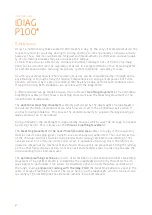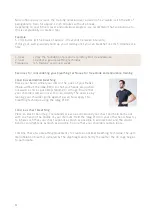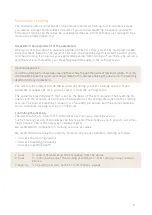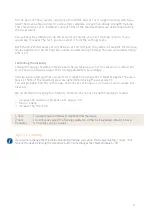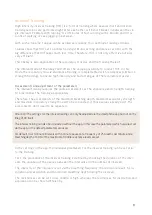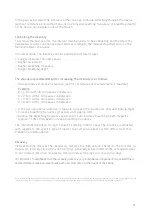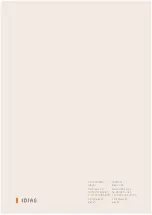
2
Background
At rest, a human being takes some 20,000 breaths a day. As the only vital skeletal muscle, the
respiratory muscles work day and night. During sporting or other generally strenuous activity,
however, these muscles can become fatigued and impair athletic performance and even quali-
ty of life. Various diseases may also increase this fatigue.
To train these muscles effectively, ordinary endurance training is not sufficient. The Idiag
P100 can be used to train the respiratory muscles in a targeted manner, thus improving athle-
tic performance and also reducing respiratory system complaints caused by disease.
As with any skeletal muscle, the respiratory muscles can be stimulated either through endur-
ance training or through strength training. Comprehensive training encompasses both com-
ponents, which is why we also recommend that healthy people perform both endurance and
strength training. Both modalities are possible with the Idiag P100.
A differentiation can be made between three different
breathing movements
: The abdominal
breathing movement, the thoracic breathing movement and the breathing movement in the
neck/throat/shoulder area.
The
abdominal breathing movement
is mainly performed by the diaphragm. The diaphragm is
considered the main inhalation muscle, which lowers itself in the abdominal cavity when it
contracts during inhalation. This causes the abdominal cavity to expand, thereby allowing a
large volume of air to be inhaled.
During inhalation, the diaphragm is supported by muscles which cause the rib cage to expand
by raising the ribs. This is known as the
thoracic breathing movement
.
The
breathing movement in the neck/throat/shoulder area
comes into play if the respiratory
muscles need to develop great strength, are overstrained or exhausted. The constant action
of the shoulder and neck muscles during endurance training can lead to overloading of the
neck area and to it suffering cramps as a result. In endurance training, this is therefore con-
sidered a compensatory mechanism and should consequently be prevented. Strength training,
on the other hand, requires action from the neck and shoulder areas in order to generate the
corresponding forces and pressures.
The
optimal breathing technique
consists of a combination of abdominal and chest breathing
movements. The optimal breath is initiated by the diaphragm and shortly thereafter the rib
cage begins to participate. This allows for maximum expansion and therefore ventilation of
the lungs. During
endurance training with the Idiag P100
the breathing pattern is exactly the
same, whereby breathing is forced. The focus here is on the diaphragm, which is trained corre-
spondingly. The neck/throat/shoulder area remains loose and relaxed..
IDIAG
P100
®
PERFORMANCE


